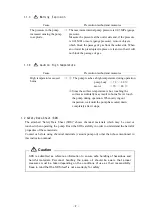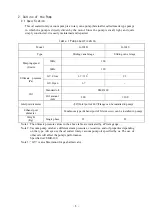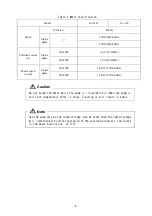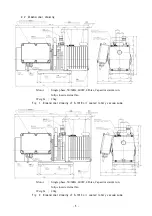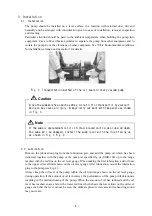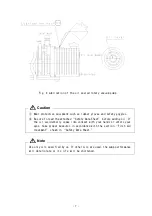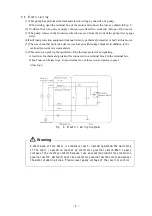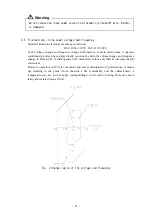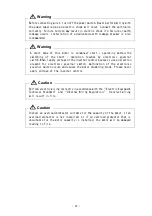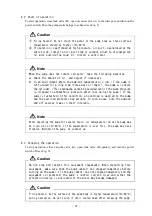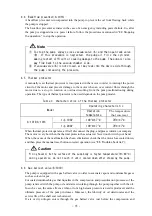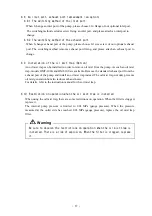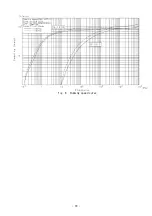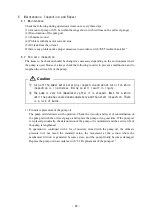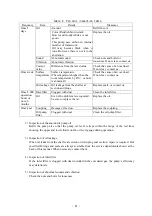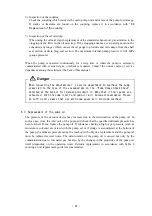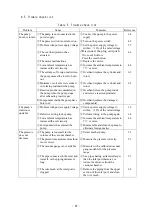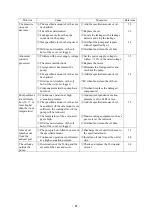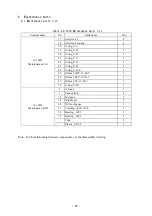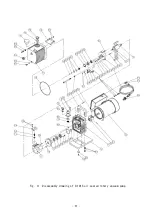
- 16 -
pressurization processes of the pump, condensable gas will not liquefy and will be exhausted
together with air through the outlet valve. When the gas ballast valve is used, the “gas ballast
effect” increases as the pump temperature becomes high. So, before evacuating condensable gas,
perform operation for approximately 20 minutes with the gas ballast open, and after the pump
temperature reaches approximately
50
~
65
℃
, open vacuum valve (A) and continue operation.
If the temperature is low, a satisfactory “gas ballast effect” is not achieved.
If the gas ballast valve is left open when condensable gas is not evacuated, not only does the
pump oil scatter and power is lost, but also the ultimate pressure increases. Furthermore, since
the gas ballast valve’s capacity to process condensable gas is limited, condensable gas remains
in the pump oil when a lot of condensable gas is exhausted or when condensable gas (air and
gas containing small amounts of moisture and other vapor which make the oil dirty) is
exhausted without opening the gas ballast valve. In such a case, perform non-load operation
with vacuum valve (A) closed and the gas ballast valve open. Then the oil temperature increases
and the pump oil is purified due to the effect of the gas ballast valve. Continue non-load
operation with the gas ballast valve closed until the specified pressure is reached. If the pump
oil is not cleaned even a long time, replace the pump oil.
As the surface of the pump body is high temperature (70~80℃) during operation,
do not touch it besides the gas-ballast valve.
Start operation after closing the gas-ballast valve.
If the gas ballast valve is left open without condensable gas being exhausted,
the pump oil scatters, power is lost, or the ultimate pressure increases.
Close the gas ballast valve when condensable gas is not exhausted.
4.7
Operation in cold climates
4.7.1 Operational method
In winter-season, when operating the pump in cold environment , it will be difficult to start up
the pump. It is called over-load operation because of high viscosity of the pump oil at low
temperature.
If the pump does not restart, warm up the pump oil, or try to keep the pump within the operating
temperature for a little while and then turn on the power again.
When the pump stops after rotating for a few seconds, open leak valve (B) and continuous
operation may become possible. After the pump has warmed up, close leak valve (B) and return
to ordinary operation.
4.7.2 Important points
This pump uses the motor of the condenser start / operation type.
Start / the operation performs switching in electronic governor switch made guts in motor.
When start of the pump is difficult, pump does a restart action for approximately five seconds,
when it cannot start, thermal protector operates for conservation.
When thermal protector operated, I disconnect the plug, and let me reset thermal protector
(see “4.5 thermal protector
”).
Caution
Note

